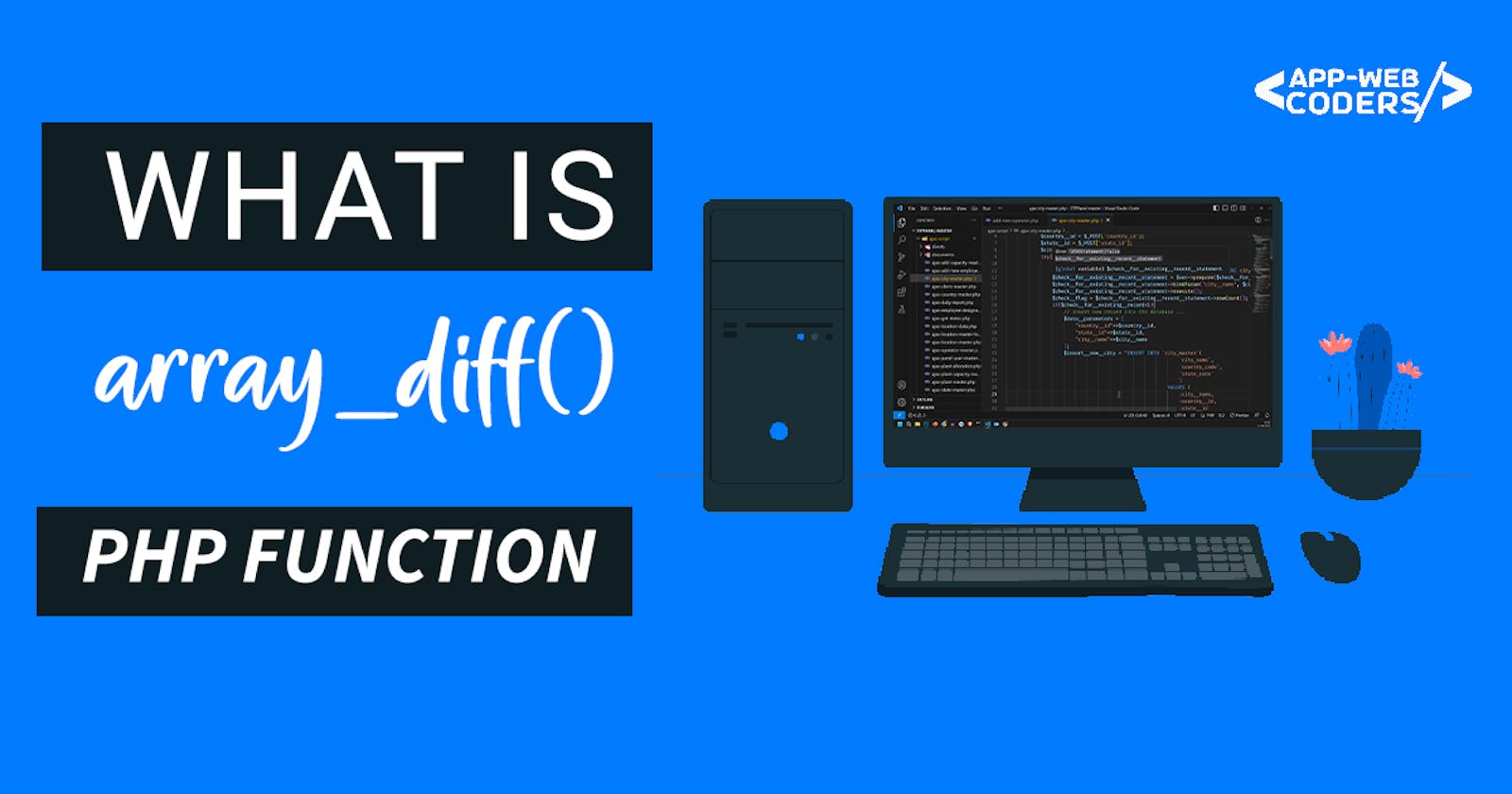Introduction
array_diff — Computes the difference of arrays
Supported Versions: – (PHP 4 >= 4.0.1, PHP 5, PHP 7, PHP 8)
In Today’s Blog, We are going to discuss array_diff() function in PHP. When it comes to working with arrays in PHP, developers often encounter situations where they need to compare arrays and find the differences between them. This is where the array_diff() function comes to the rescue. In this comprehensive guide, we will delve into the intricacies of the array_diff() function, understanding its syntax, functionality, and usage with real-world examples.
Understanding the array_diff() Function:
When working with arrays in PHP, the array_diff function emerges as a powerful tool for array comparison and manipulation. array_diff function enables developers to identify the disparities between arrays effortlessly, facilitating streamlined data processing and analysis.
The array_diff function allows you to compare arrays, pinpointing differences across elements while efficiently managing array operations. By leveraging this function, developers can identify unique values present in one array but absent in another, paving the way for comprehensive data management and validation.
One remarkable feature of array_diff is its ability to perform comparisons based on the string representation of elements. For instance, values like 1 and ‘1’ are considered equivalent during the comparison process. This flexibility empowers developers to handle diverse data types seamlessly.
Moreover, array_diff simplifies array comparisons regardless of element repetition. Whether an element is repeated several times in one array or occurs only once in another, the function ensures accurate differentiation, contributing to consistent and reliable results.
For more intricate data structures, such as multi-dimensional arrays, array_diff proves its versatility by facilitating dimension-specific comparisons. Developers can effortlessly compare elements across various dimensions, ensuring precise analysis within complex arrays.
Incorporating the array_diff function into your PHP arsenal enhances your array management capabilities, streamlining the identification of differences and enabling efficient data manipulation. By seamlessly integrating array_diff into your codebase, you unlock a world of possibilities for effective array handling and optimization.
The array_diff function in PHP is a powerful tool that allows developers to compare two or more arrays and return the values that exist in the first array but not in the subsequent arrays. It effectively finds the differences between arrays, making it an essential function for tasks like data validation, data synchronization, and more
Note
| Version | Description |
| 8.0.0 | This function can now be called with only one parameter. Formerly, at least two parameters have been required. |
Source: https://www.php.net/
Syntax:
array_diff(array $array1, array $array2 [, array $... ])
Parameters:
array1: The base array for comparison.
array2: The array to compare against array1.
…: Additional arrays to compare against array1.

Example 1: Basic Usage:
$array1 = [1, 2, 3, 4, 5];
$array2 = [3, 4, 5, 6, 7];
$differences = array_diff($array1, $array2);
print_r($differences);
Output
Array
(
[0] => 1
[1] => 2
)
Example 2: Associative Arrays:
$fruits1 = ["apple" => 1, "banana" => 2, "orange" => 3];
$fruits2 = ["banana" => 2, "kiwi" => 4, "orange" => 3];
$differences = array_diff_assoc($fruits1, $fruits2);
print_r($differences);
Output
Array
(
[apple] => 1
)
Example 3: Multi-dimensional Arrays:
$books1 = [
["title" => "PHP Basics", "author" => "John Doe"],
["title" => "JavaScript Mastery", "author" => "Jane Smith"]
];
$books2 = [
["title" => "PHP Basics", "author" => "John Doe"],
["title" => "Python Fundamentals", "author" => "Michael Johnson"]
];
$differences = array_udiff($books1, $books2, function($a, $b) {
return strcmp($a["title"], $b["title"]);
});
print_r($differences);
Output
Array
(
[1] => Array
(
[title] => JavaScript Mastery
[author] => Jane Smith
)
)
Important Points
It performs a comparison based on the string representation of elements. In other words, both 1 and ‘1’ are considered equal when using the array_diff function.
The frequency of element repetition in the initial array is not a determining factor. For instance, if an element appears 3 times in $array1 but only once in other arrays, all 3 occurrences of that element in the first array will be excluded from the output.
In the case of multi-dimensional arrays, a separate comparison is needed for each dimension. For instance, comparisons should be made between $array1[2], $array2[2], and so on.
Conclusion
The array_diff() function in PHP proves to be an invaluable tool for comparing arrays and extracting their differences. From simple one-dimensional arrays to complex multi-dimensional structures, the function is versatile and easy to use. By understanding its syntax and exploring real-world examples, developers can harness the power of array_diff() to streamline their array manipulation tasks and ensure data accuracy. Incorporating this function into your PHP toolkit can significantly enhance your coding efficiency and productivity.
Remember, mastering the array_diff() function is just the beginning of your journey into PHP’s array manipulation capabilities. With this knowledge, you’re better equipped to tackle diverse programming challenges and create more robust and efficient applications.

